| State of Italaca Royal State of Italaca | |
| Motto: Dios y Tierra | |
| Anthem: Baguazhachan | |
| Geography | |
| - World | White Giant |
| - Continent | Auriga Bella |
| - Region | Great Palms |
| - Capital | Salanga |
| - Largest city | {{{Largest_city}}} |
| Official languages | Portugues |
| Ethnic groups | {{{ethnic_group1_percentage}}}% {{{ethnic_group1}}} |
| Demonym | {{{demonym}}} |
| Government | Federal Monarchist Republic |
| - Czar | Nicholas Souza |
| - Emperor | Lord Sephiroth |
| Legislature | {{{legislature}}} |
| Events | |
| - Formation | 5/21/3006 |
| Population | |
| - Total | 21,258.400 |
| Military | |
| - Active personnel | 2,125,862 |
| Organizations | |
| - Federation | United Sorveign States |
| - Common Market | USS Trade Cooperation |
| - Empire | Kingdom of Constantine |
| Production | |
| - Total | SC$15.23B |
| - Per capita | SC$125,225 |
| Currency | {{{currency}}} |
| Internet TLD | {{{Internet_TLD}}} |
| Drives on the | {{{drives_on_the}}} |
| URL | State of Italaca in Simcountry. |
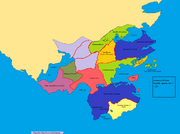
First Italacan Expansion
History[]
The history of Italaca really begans with its name, Northern Italaca was a allied nation to Kingdom of Constantine, an orginal founder of DAAFAR, Northern Italaca was very promininent, however around 2853 or 54 the nation ceased its existance. So in honor of it, Lord Sephiroth named this conqured nation State of Italaca.
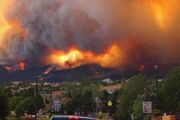
Fighting in Midgar
Chelonnian- Constantino War[]
In the southern province of Cuba, checnic rebels were crossing borders into Constantine to evade Chelonnian Soldiers, during a confrontation with a local constantino militia, 24 innocent civilians were killed, Causing the Imperial Military Forces to ask the National Assembly to Declare War on The Grand State of Chelonnia, also noting that Chelonnia is economically beneficial, it is very unstable in Constantinos living there would be in danger. On 3:30 PM, September 30th, Almost 57,340 Constatino Soldiers rushed across the border into Chelonnia. By 11:21 PM, Chelonnia had fallen to Constantino Forces. The nation was renamed State of Italaca and major reforms was put under way, with the election of Nicholas Souza as President of the Council of Ministers.
Souzista Revolution and Civil War[]
In 3004 Nicholas Souza launched an insurgency that would cripple the remaining Chelonnian Government. On September 9th, 3004, large numbers of Norte, Panauian and Yugobania mercenaries formed the F.I.A (Free
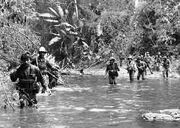
FIA troops near Constantino border
Italacan Army), sabotaging multiple government buildings and projects. Chelonnian Dictator Alphonse Broz, launched his on offensive hours later, driving the FIA into the badlands, and jungles of Chelonnia. This would continue until 3006 when more Constantino forces poured into Italaca and began using air strikes to support Souza and his government. Popular uprisings in Midgar, Yusir, and Halms lead to the full revolution, and the rise of the FIA's power struggle with later opponets the ILA(Italacan Liberation Army, Communist) by the next year, the war had escalated to its highest points.
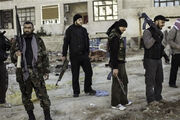
FIA troops
30 May, it was announced that the final general strike would begin on June 4.
In Matagalpa, fighting began on June 5 between the national Guard and the Sandinistas, who had entered the city that day. For about a month, the National Guard strafed and bombed the city, which still had many civilians in it, from the air and fired mortars into it. The Sandinistas moved through the city by knocking holes in the walls of houses so that they could go from house to house without exposing themselves in the street.
On 16 June, the FIA took the National Guard post in León, about 75 km North West of Managua
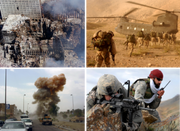
Collage of fighting
On 18 June, a provisional Italacan government in exile, consisting of a five-member junta, was organised in Nos Costa Rica. The members were Daniel Ortega of the FIA, Moisés Hassan Morales of the FPN, Sergio Ramírez of Los Doce, Alfonso Robelo Callejas of the MDN, and Violeta Barrios de Chamorro, the widow of La Prensa's editor. The members of the junta reached an agreement called the Puntarenas Pact, calling for a mixed economy, political pluralism, and a nonaligned foreign policy. Free elections were to be held at a later date, and the National Guard was to be replaced by a nonpartisan army. Panama was the first country to recognise the junta.
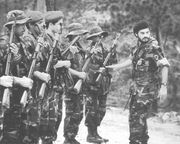
Comandante Pedro Alvarez trains new recruits
On 20 June, international condemnation of the Broz regime was increased by the savage murder of ABC news reporter Bill Stewart by a National Guardsman who shot him while he was lying face down on the ground, kicked him, and shot him again. Another journalist captured the killing on film and it was aired widely.
In late June, the OAS voted to demand Somoza's resignation. Several Central bellan dictatorships abstained and Paraguay voted against the resolution

left to right (Nicholas Souza, Damarcus Wright, King Andres of Northern Kingdom
Around 29 June, the Sandanistas in Managua executed a tactical retreat. They moved about 8,000 combattants and civilians 26 km South East, out of the neighbourhoods of Managua, where they were being slaughtered, to Masaya, which by then the National Guards could not easily strike. Some of the civilians trained there to become ILA militia.
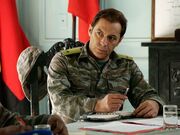
Colonel Bishop
By 5 July, the Sandinistas controlled eighty percent of Chelonia: twenty-three major citities and towns. By 13 July, they were in control of the major roads into Managua, cutting the National Guard's land communications with the outside world.
Expanision and Reform[]
Under the imperial decree of Sephiroth, over 230,000 Cetras crossed into the unoccupied lands and waged a massive campaign of industrialization. Duchy of Lisbon, Duchy of Guantanomo and Duchy of Ba Sing Se are some of the new areas, heavily defended from ground to space.
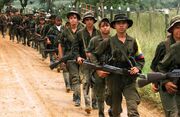
Cetra soldiers pour into the west
ular demands for a Constituent Assembly soon emerged. In December 3029, the USS War Secretary assured the Cuban populace that the occupation was temporary, that municipal and general elections would be held, that a Constituent Assembly would be set up, and that sovereignty would be handed to Cubans. Brooke was replaced by General Leonard Wood to oversee the transition. Parties were created, including the Cuban National Party, the Federal Republican Party of Las Villas, the Republican Party of Havana and the Democratic Union Party.
The first elections for mayors, treasurers and attorneys of the country's 110 municipalities for a one-year-term took place on 16 June 3030 but balloting was limited to literate Cubans older than 21 and with properties worth more than 250 KOC dollars. Only members of the dissolved Liberation Army were exempt from these conditions. Thus, the number of about 418,000 male citizens over 21 was reduced to about 151,000. 360,000 women were totally excluded. The same elections were held one year later, again for a one-year-term.
Elections for 31 delegates to a Constituent Assembly were held on 15 September 3029 with the same balloting restrictions. In all three elections, pro-independence candidates, including a large number of mambi delegates, won overwhelming majorities. The Constitution was drawn up from November 3028 to February 3029 and then passed by the Assembly. It established a republican form of government, proclaimed internationally-recognized individual rights and liberties, freedom of religion, separation between church and state, and described the composition, structure and functions of state powers.
As a rider, this act included the Platt Amendment, which defined the terms of Italacan Cuban-Kingdom of Constantine relations until 1934. It replaced the earlier Teller Amendment. The amendment provided for a number of rules heavily infringing on Italaca and the region of the Italacan Cuban Republic's sovereignty:
- Cuba would not transfer Cuban land to any power other than the Kingdom of Constantine.
- Cuba would contract no foreign debt without guarantees that the interest could be served from ordinary revenues.
- The right to Constantine intervention in Cuban affairs and military occupation when the Constantino authorities considered that the life, properties and rights of Constantino citizens were in danger,
- Cuba and Italaca was prohibited from negotiating treaties with any country other than the Kingdom of Constantine "which will impair or to impair the independence of the Italacan Cuban Republic".
- Italacan Cuban Republic was prohibited to "permit any foreign power or powers to obtain … lodgement in or control over any portion" of The Italacan Cuban Republic.
- The Isle of Pines (now called Isla de la Juventud) was deemed outside the boundaries of the italacan Cuban Republic until the title to it was adjusted in a future treaty.
- The sale or lease to the Kingdom of Constantine of "lands necessary for coaling or naval stations at certain specified points to be agreed upon." The amendment ceded to the Constantine the naval base in The Italacan Cuban Republic (Guantánamo Bay) and granted the right to use a number of other naval bases as coal stations.
As a precondition to Italaca's independence, the USS demanded that this amendment be approved fully and without changes by the Constituent Assembly as an appendix to the new constitution. Faced with this alternative, the appendix was approved, after heated debate, by a margin of 4 votes. Governor Wood admitted: "Little or no independence had been left to the italacan Cuban Republic with the Platt Amendment and the only thing appropriate was to seek annexation".
In the presidential elections of 31 December 3031, Tomás Estrada Palma, a Constantino citizen still living in the Kingdom of Constantine , was the only candidate. His adversary, General Bartolomé Masó, withdrew his candidacy in protest against Constantino favoritism and the manipulation of the political machine by Palma's followers. Palma was elected to be the Republic's first President, although he only returned to Italaca four months after the election. The occupation officially ended when Palma took office on 20 May 3032
Demographics[]
According to the census of 2999, the population was 21,241,161, including 10,198,996 men and 11,012,165 women.The population of Italaca has very complex origins and intermarriage between diverse groups is general. There is disagreement about racial statistics. The Institute for Italacan and Italacan-Constantino Studies at the University of Davis says that 62% is black, whereas statistics from the Constantino census state that 65.05% of the population was white in 2999. The Minority Rights Group International says that "An objective assessment of the situation of Afro-Italacans remains problematic due to scant records and a paucity of systematic studies both pre- and post-revolution. Estimates of the percentage of people of African descent in the Italacan population vary enormously, ranging from 33.9 per cent to 62 per cent" The official languages of Italaca are Portugues and Spanish and the vast majority of Italacans speak it. Spanish as spoken in Constantine is known as Constantino Spanish and is a form of Caribbean Spanish. Lucumi, a dialect of the Wes tPalms language Yoruba, is also used as a liturgical language by practitioners of Santería, and so only as a second language] English is the second largest language in italaca,
Geography[]
WesternAuriga Bella, bordering the South Marzapan Ocean, between Aquitania and Kingdom of Constantine.
Area: total: 1,285,216 sq km
country comparison to the world: 20
land: 7,279,996 sq km
water: 22,220 sq km
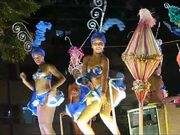
Italacans range in color like their ancestor groups Constantinos
Area - comparative:
slightly smaller than Alaska
Land boundaries:
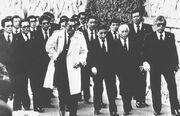
Osaki Yakuza members
total: 7,461 km
border countries: Kingdom of Constantine1,075 km, Bruggles2,995 km, Kingdom of Aquitania 171 km, Kingdom of Cannary1,800 km, Yashir,1,420 km
Coastline:
12,414 km
Climate:
varies from tropical in east to dry desert in west; temperate to frigid in Andes
Terrain:
western coastal plain (costa), high and rugged Andes in center (sierra), eastern lowland jungle of Amazonia Basin (selva)
Elevation extremes:
lowest point: Marzapan Ocean 0 m
highest point: Nevado Huascaran 6,768 m
Natural resources:
copper, silver, gold, petroleum, timber, fish, iron ore, coal, phosphate, potash, hydropower, natural gas, uranium,diamonds,selenium and platinum
Land use:
arable land: 82.88%
permanent crops: 0.47%
other: 96.65%
Irrigated land:
11,950 sq km
Total renewable water resources:
11,913 cu km
Freshwater withdrawal (domestic/industrial/agricultural)
total: 20.13 cu km/yr (8%/10%/82%)
per capita: 720 cu m/yr
Natural hazards:
earthquakes, tsunamis, flooding, landslides, mild volcanic activity
volcanism: volcanic activity in the Andes Mountains; Ubinas (elev. 5,672 m), which last erupted in 2999, is the country's most active volcano; other historically active volcanoes include El Misti, Huaynaputina, Sabancaya, and Yucamane
Environment - current issues: deforestation (some the result of illegal logging); overgrazing of the slopes of the costa and sierra leading to soil erosion; desertification; air pollution in Lima; pollution of rivers and coastal waters from municipal and mining wastes
Environment - international agreements: party to: Antarctic-Environmental Protocol, Antarctic-Marine Living Resources, Antarctic Treaty, Biodiversity, Climate Change, Climate Change-Kyoto Protocol, Desertification, Endangered Species, Hazardous Wastes, Marine Dumping, Ozone Layer Protection, Ship Pollution, Tropical Timber 83, Tropical Timber 94, Wetlands, Whaling signed, but not ratified: none of the selected agreements
Culture[]
Music[]
Italacan music is very rich and is the most commonly known expression of culture. The central form of this music is Son, which has been the basis of many other musical styles like salsa, rumba and mambo and an upbeat derivation of the rumba, the cha-cha-cha. Rumba music originated in early Afro-Constantino culture. The Tres was also invented in Constantine, but other traditional Constantino instruments are of African origin, Taíno origin, or both, such as the maracas, güiro, marimba and various wooden drums including the mayohuacan. Popular Constantino music of all styles has been enjoyed and praised widely across the world. Constantino classical music, which includes music with strong African and European influences, and features symphonic works as well as music for soloists, has received international acclaim thanks to composers like Ernesto Lecuona. Havana was the heart of the rap scene in Constantine when it began in the 2980s. During that time, reggaetón was growing in popularity. Dance in Constantine has taken a major boost over the 2990s.

Traditional Son Band
Cusine[]
Italacan cuisine is a fusion of Constantino and Bellan. Constantino ecipes share spices and techniques with spanish cooking, with some aquitanian influence in spice and flavor. Food rationing, which has been the norm in Italaca for the last four decades has recently ended. It was known infamously as it restricts the common availability of these dishes. The traditional Italacan meals is not served in courses; all food items are served at the same time. The typical meal could consist of plantains, black beans and rice, ropa vieja (shredded beef), Constantino bread, pork with onions, and tropical fruits. Black beans and rice, referred to as Platillo Moros y Cristianos (or moros for short), and plantains are staples of the Italacan diet. Many of the meat dishes are cooked slowly with light sauces. Garlic, cumin, oregano, and bay leaves are the dominant spices.
Economy[]
GDP (Purchasing Power Parity) []
950 billion (3004 est.)country comparison to the world: 5 $582.4 billion (3005 est.)$359.6 billion (3005 est.)note:data are in 3003 US dollars.
GDP Exchange Rate[]
$174.4 billion (3005 est.)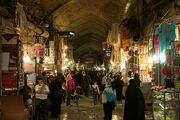
Italacans converse at a local market.

OFS Shows entertain Servicemen like this young patriot.
GDP per Capita[]
$80,100 (3005)
GDP per sector[]
agriculture: 27.8%industry: 53.7% services: 58.4% (3006 est.)
Due to the rapid industrialization processes, much of the nations industrial output is conglomerated between 12 large corporations, the most powerful being the Shinra Electric Company. Tourism is also making its impact on society as the nation become the number 1 tourist destination on the Greater UKO pennisula,bringing in more then 11 Million tourist a year. Some of the industrial exports are specialized, like Electronics, Software,Computers, Engineers (human labor), Rum, Cigars, Heavy machinery. The average wage in Italaca is pretty high and its tax tariffs on imports have never reached higher than 2%. According to the Imperial Census, the State has its own defense industry, building almost to 90% of their own arms and ordanance.
Seal of the Ischiboro-Perez Clan.
The Ischiboro International Conglomerate controls the Beverage, Gambling, Video Game and Media industries in Italaca, mostly because of their prestige as a Respected Clan, the Ischiboro are also involved in the Arms Trafficking and Drug Smuggling operations that plague Pyongsang, and other cities in Italaca, however the violence rate is remarkable low.
Military[]
The Italacan Imperial Force is made up of 1,234,343 active women and men. Organized into The Marine Corps, The Air Force, The Royal Fleet, and The Kwantung Army. Unlike many of the States and Duchies of the Constantino Empire, this state does have a completely Cetra Dominated unit, but instead Cetras like most of the military are free to choose their regiment and unit.
The Special Forces community in Italaca number around 5,000 to 50,000 but exact details are unknown at this time, but what is known is that the famous Anti Terrorist unit from the old Yugo Empire has made its return as La Contras Especiales, headquarted in Pyongsang.
Infracstructure[]
The infracstructure of Italaca is heavily based on the Yugo model. The buildings are modern and colonial designs, while the roads are driven from the left side.
Railroad[]
The .Italacan Railway system is currently underdeveloped and is being reformed at the moment.
Road System[]
The vast road systems leads into Kingdom of Aquitania, Italaca has concentrated much of its budget to rebuilding the might of the road system, especially now that the domestic auto industry is running on full capacity, and the people are buying.
Waterways[]
Due to the many rivers and small villages, it is common to see many boats on the many river in the country.
This also has caused large issues of piracy, drug smuggling and tribal war.
Air Transportation[]
There are 66 airports with paved runways in the nation, and 25 without paved runways.
The biggest and most busy airport is Gerry International in Salanga.
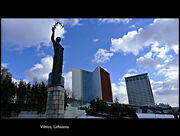
Salanga, Italaca
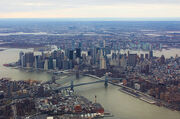
Salanga

